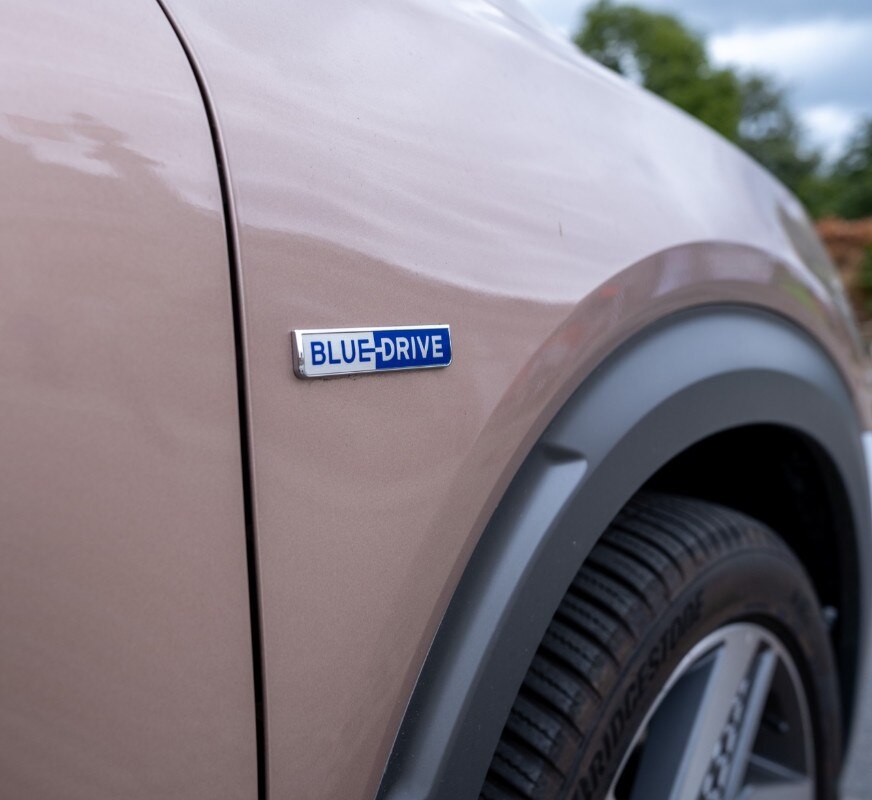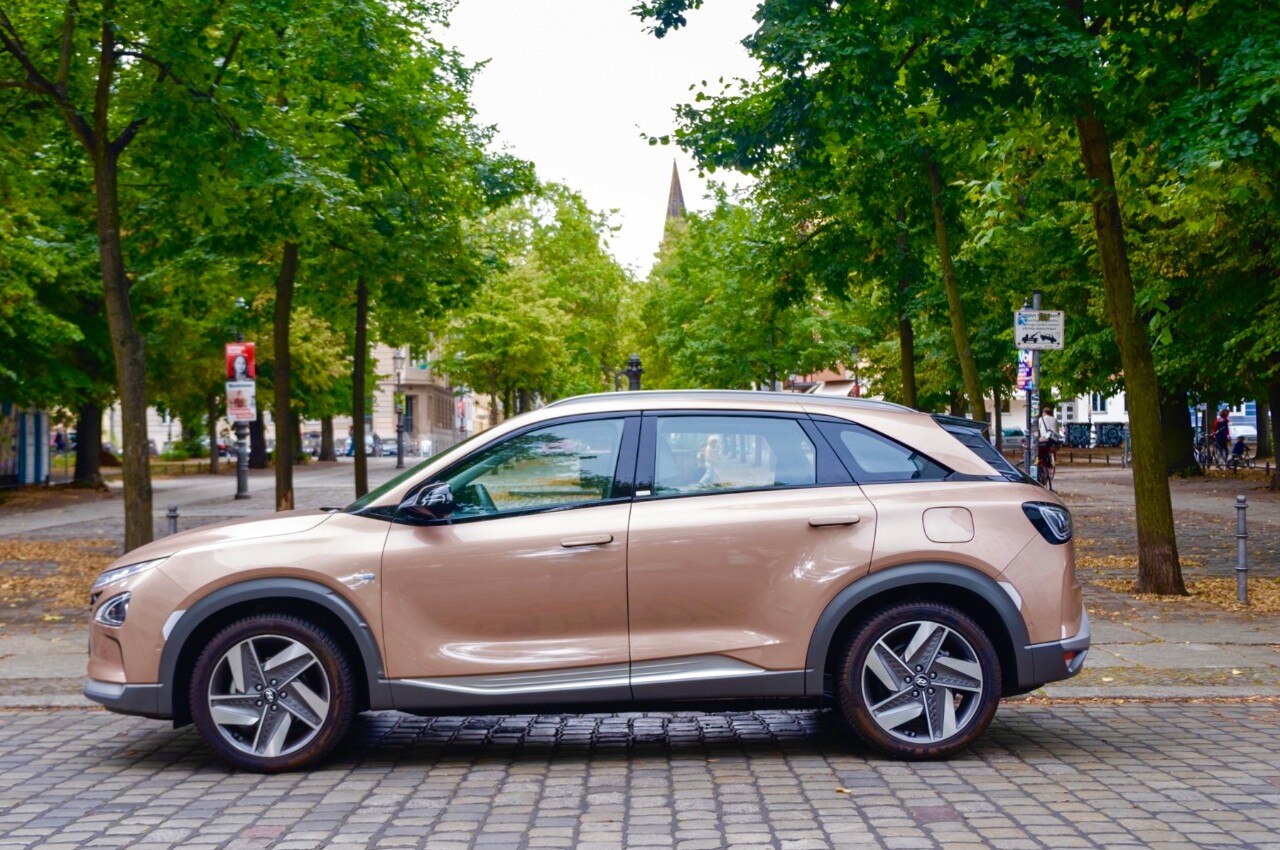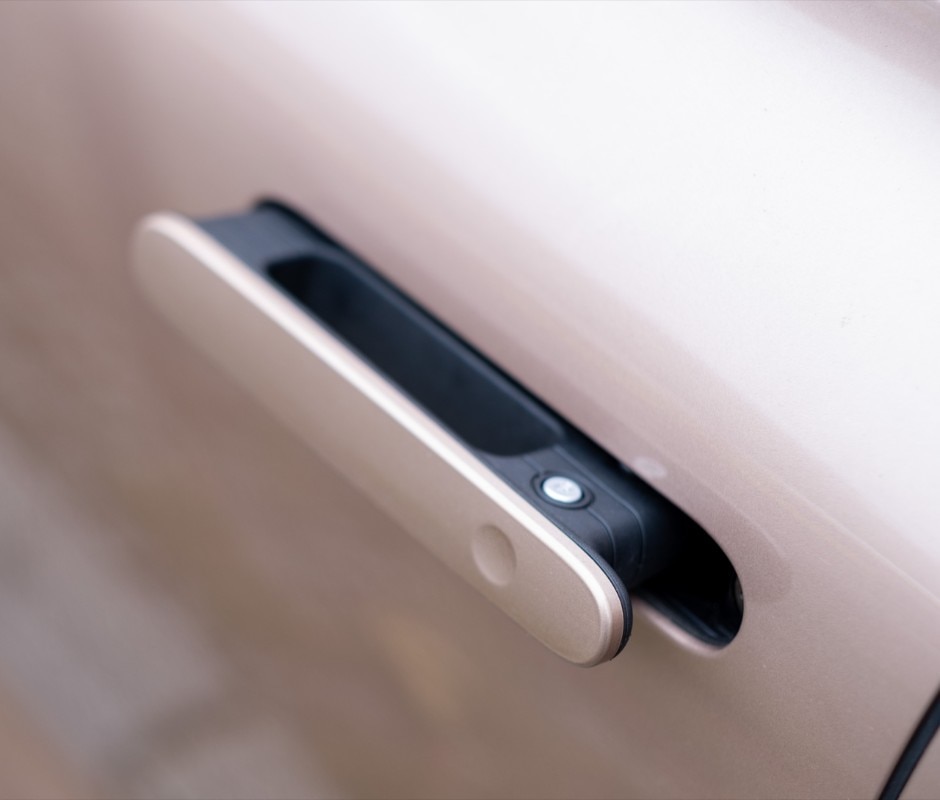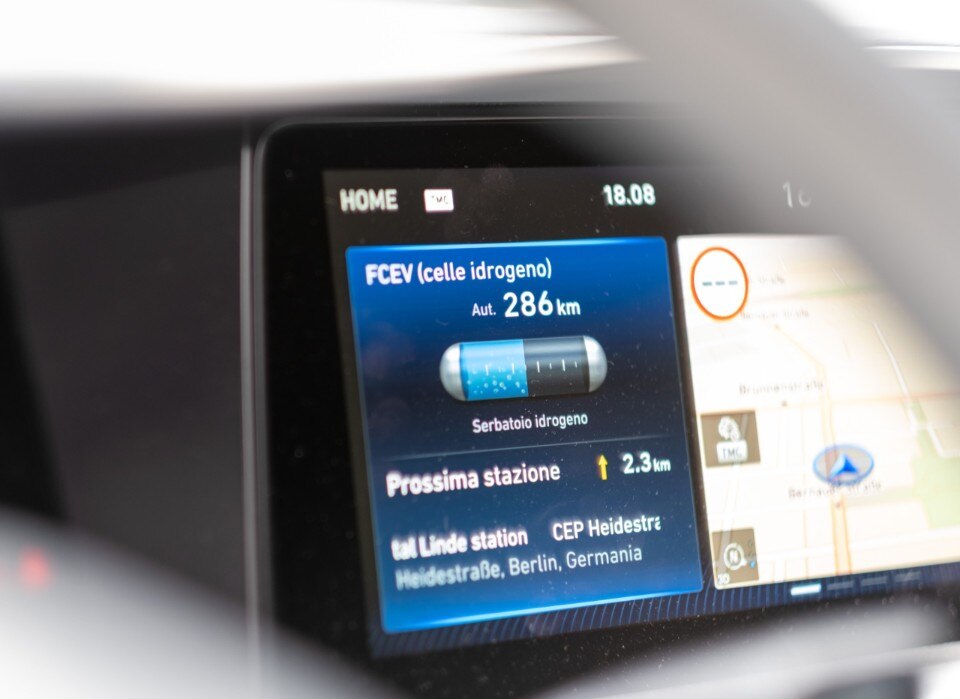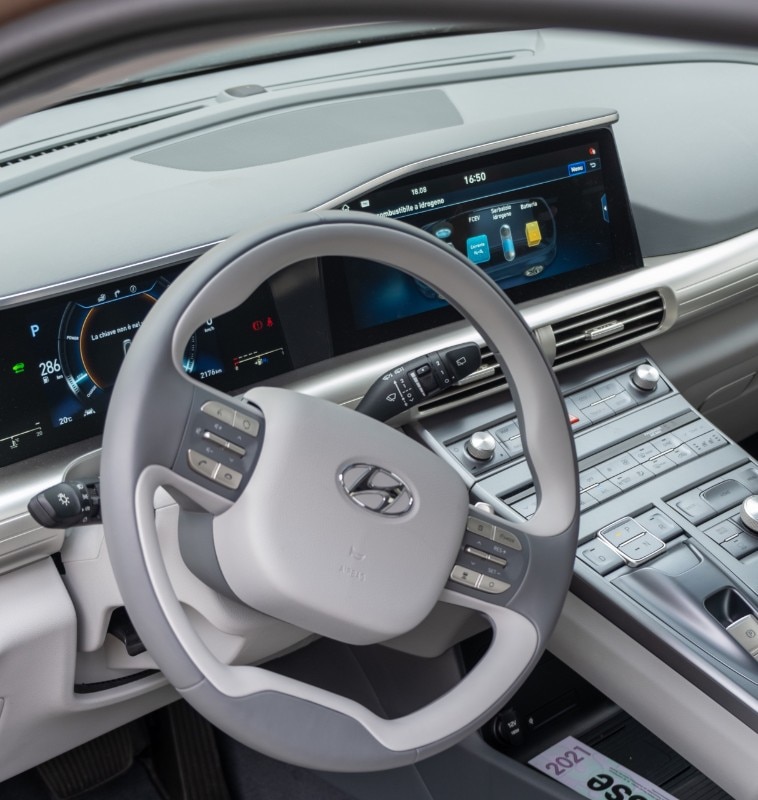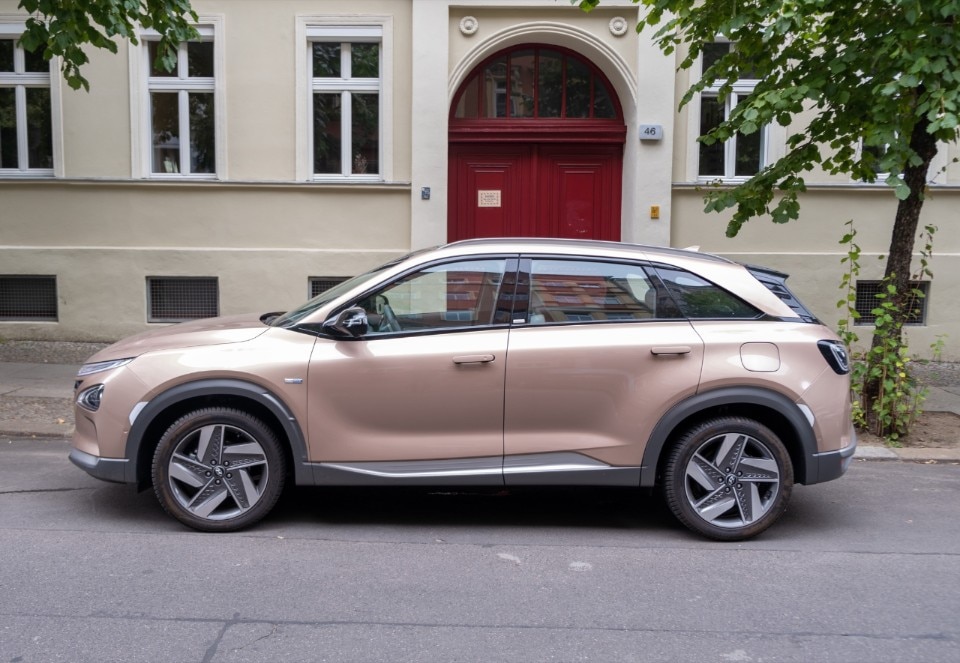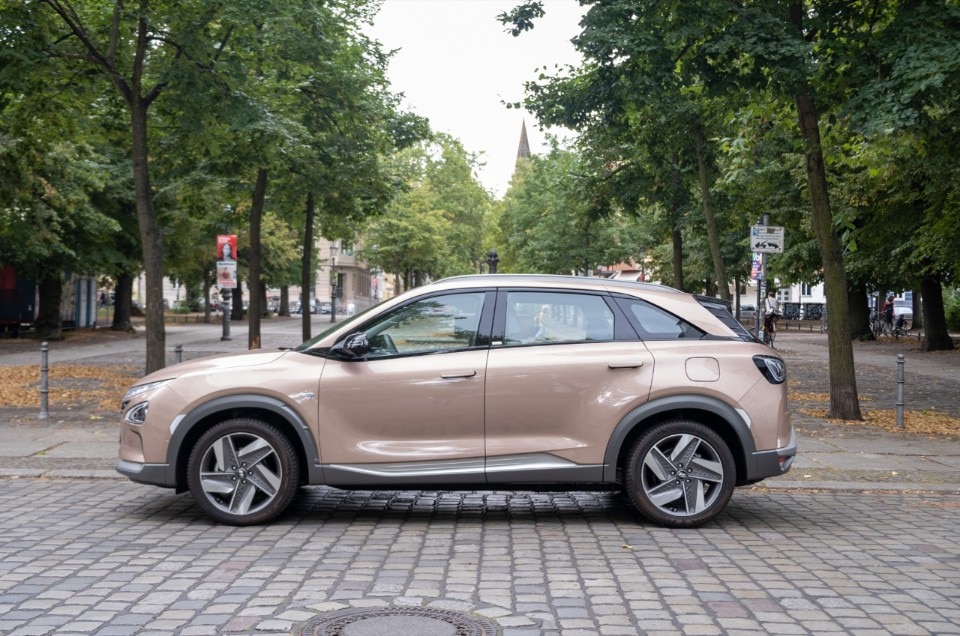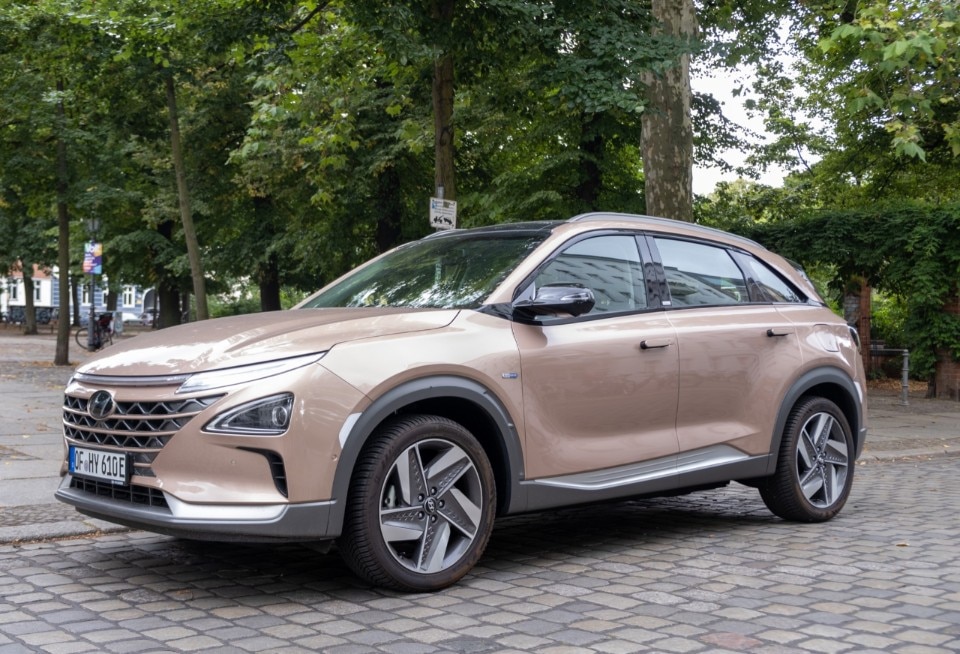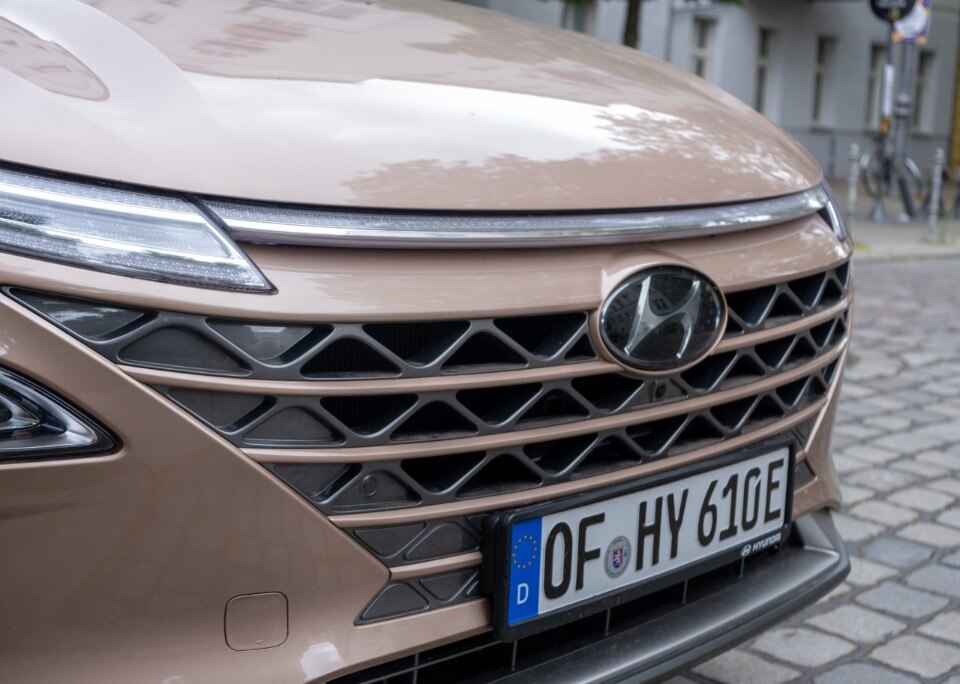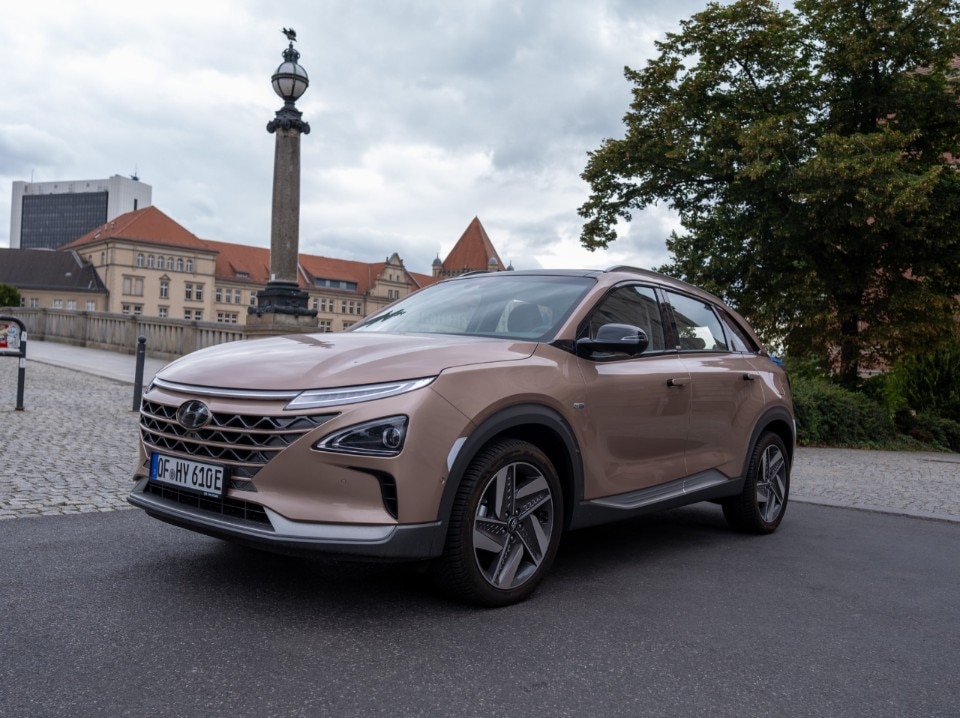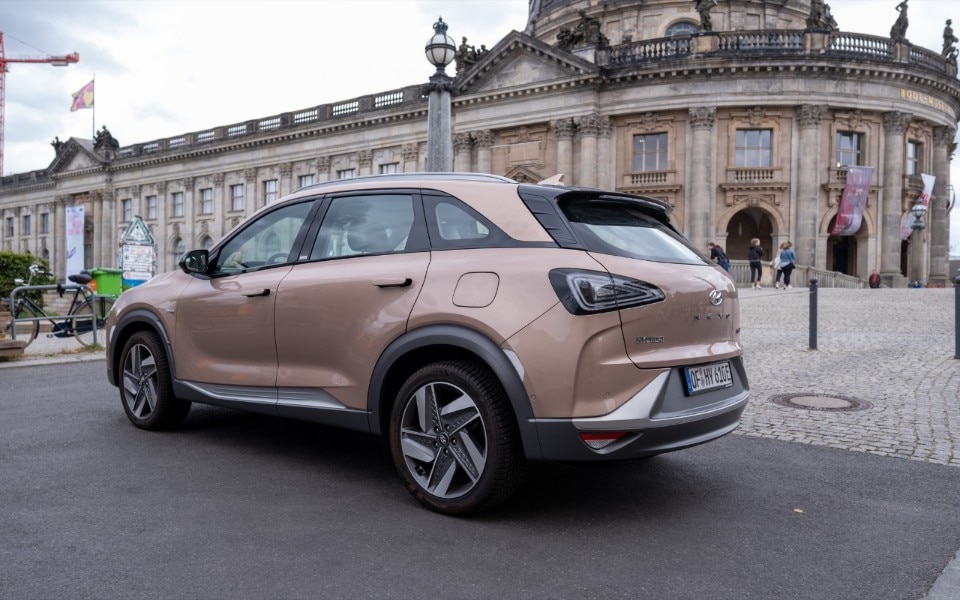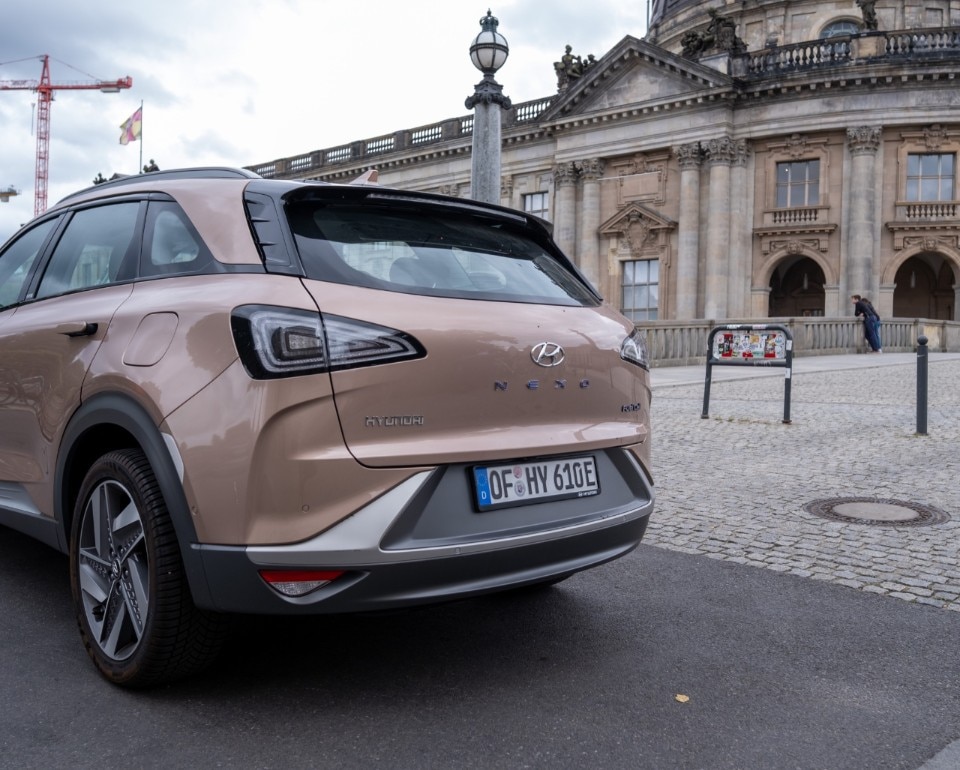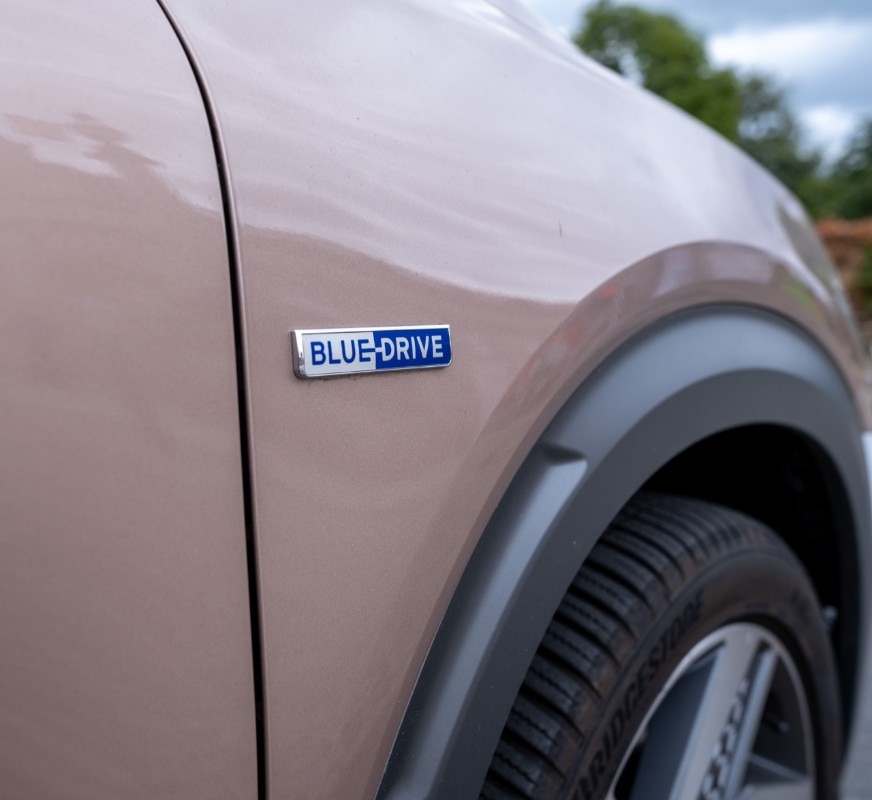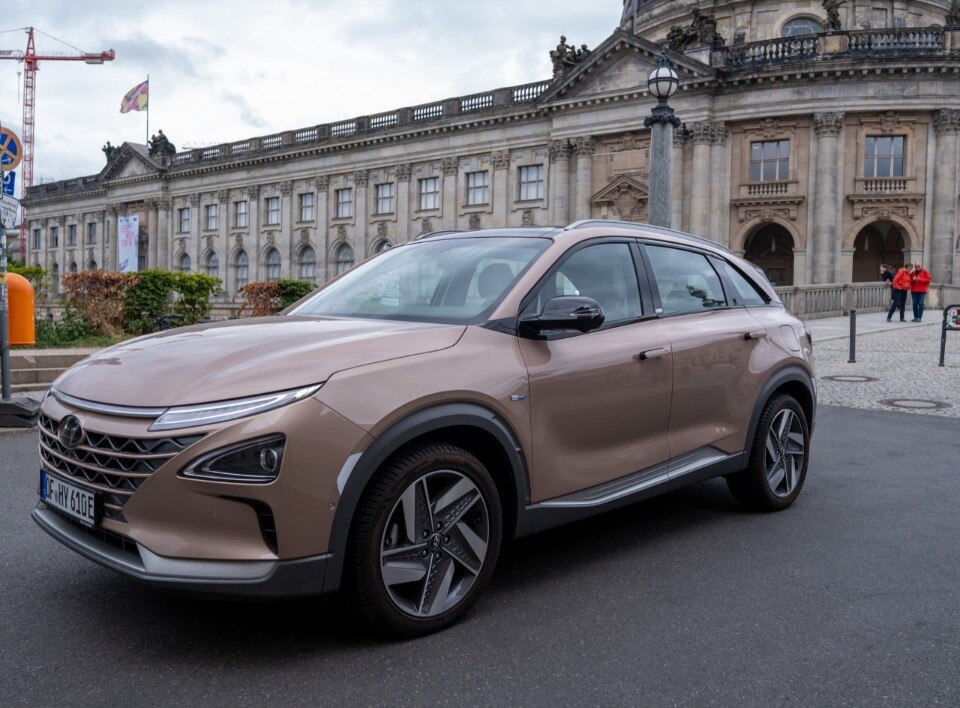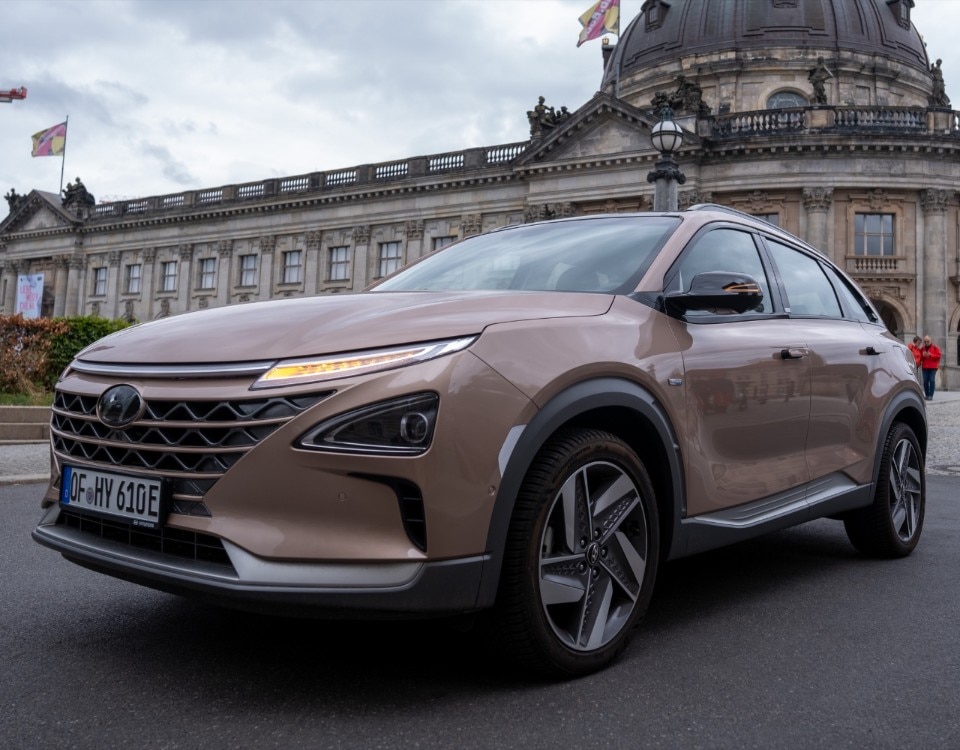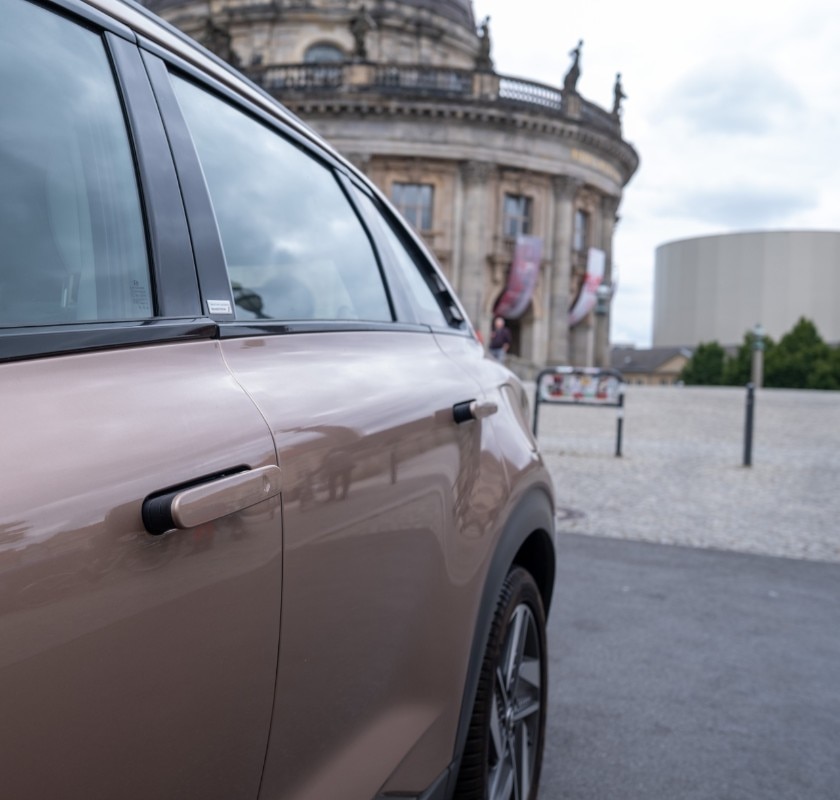When you drive a Hyundai Nexo, you won’t notice much difference from other electric SUVs. The car is silent; the driving is smooth; the torque is excellent. After all, you’re in control of an electric motor, with all its benefits. It’s just the way you’re powering it that’s quite different. Instead of one or more large batteries, the Hyundai Nexo packs a Fuel Cell, namely an electrochemical unit that mixes Hydrogen and Oxygen to generate the electricity that powers the car’s engine.
The Nexo is a versatile crossover with lots of space, fantastic manoeuvrability despite its size, high-tech functions and a reassuringly contemporary design. Unlike the new battery-powered Ioniq 5, Hyundai's bravest design leap in recent years, the Nexo's exterior is smooth and sleek. Only a few touches, like the auto flush door handles and the D-pillar air curtain, give it a slightly futuristic vibe that fits the car's pioneeristic attitude. Inside, the Nexo is a road-safe spaceship on wheels. At first, the central control aisle is intimidating with all its buttons and options, but everything falls in place pretty soon. After a few rides, muscle memory kicks in, and controls are just there, easy to reach with the right hand without any distraction.
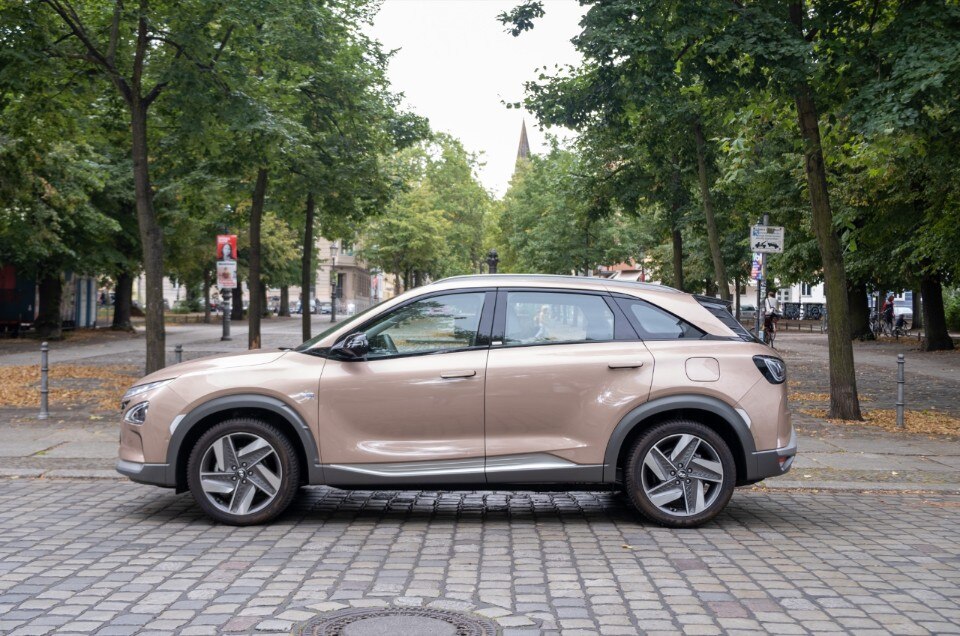
What we’ve been driving by driving a Nexo, more than the car itself, is the poster child of Hyundai’s larger “Fcev Vision 2030”, the company’s strategy for the future of hydrogen-based mobility. Outlined in 2018, Hyundai’s plan is probably going to get an update soon at the IAA auto show in Munich in September. During the past three years, the Nexo has played a central role in showing how a hydrogen-powered future is possible (and desirable) and has helped Hyundai’s effort in building the network that would underpin such a shift.
The Korean company plans to become a global leader in hydrogen technology, aiming to produce 700,000 fuel-cell systems annually by 2030, including 500,000 units for FCEVs. Under this vision, Hyundai and its suppliers will invest 6,5 billion dollars in hydrogen technology.
The commitment to hydrogen as an alternative to battery-powered cars (which Hyundai is also actively developing) is clear, and FCEV will inevitably be a part of the future of mobility if Hyundai and its partners are going to have it their way. Every element of the hydrogen narrative is pointing to a self-fulfilling prophecy: the investments are there; the need for a viable alternative to batteries for powering electric vehicles is there; the economic interest, especially, is also there, as hydrogen can better adapt to current and well-proven business models of fuel production and distribution.
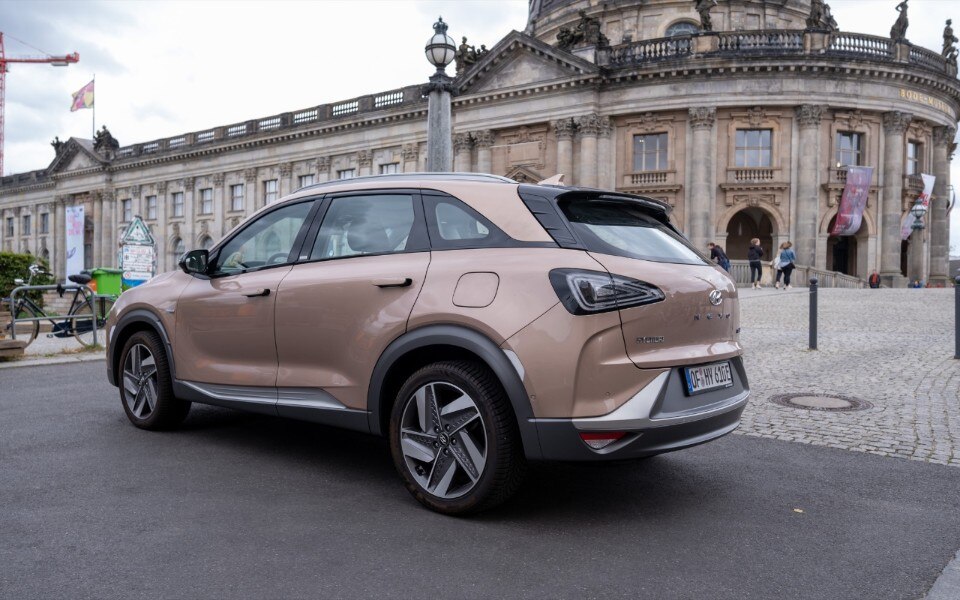
Many stakeholders of the hydrogen transition view H2 as the diesel of the future, powering bigger vehicles that need a lot of range, such as buses and trucks. Therefore, even if cars won’t play a massive part in the shift to this new fuel in the future, driving one today still shows the full potential of hydrogen technology.
An H2 car is an electric car that – at least here in Germany, where we ran our test – eliminates two intertwined UX hurdles of EVs: recharging and, to some extent, trip planning. Refuelling a hydrogen car is comparable to refuelling a gas vehicle, as hydrogen is stored in containers found at a selected refuelling station.
In a city like Berlin, where there are at least three different stations one could refuel from, we’ve never had any recharging-related fear. Then there’s range: a full H2 tank - cost is currently 9.5€ / kg, with a 6.3Kg maximum capacity - can easily power the car for more than 600km. H2 stations availability is easy to check on Hyundai partner H2Mobility’s app, H2.live, while the refuelling speed means the driver doesn’t have to account for refuelling time during a trip. On the other hand, the reach of Europe-wide trips is severely limited by the availability of refuelling stations outside of Germany and Denmark. In Italy, for example, hydrogen is available only in one station in Bozen, up North in Trentino Alto Adige. In other words, all roads lead to Rome, unless you’re driving a Fuel Cell vehicle.
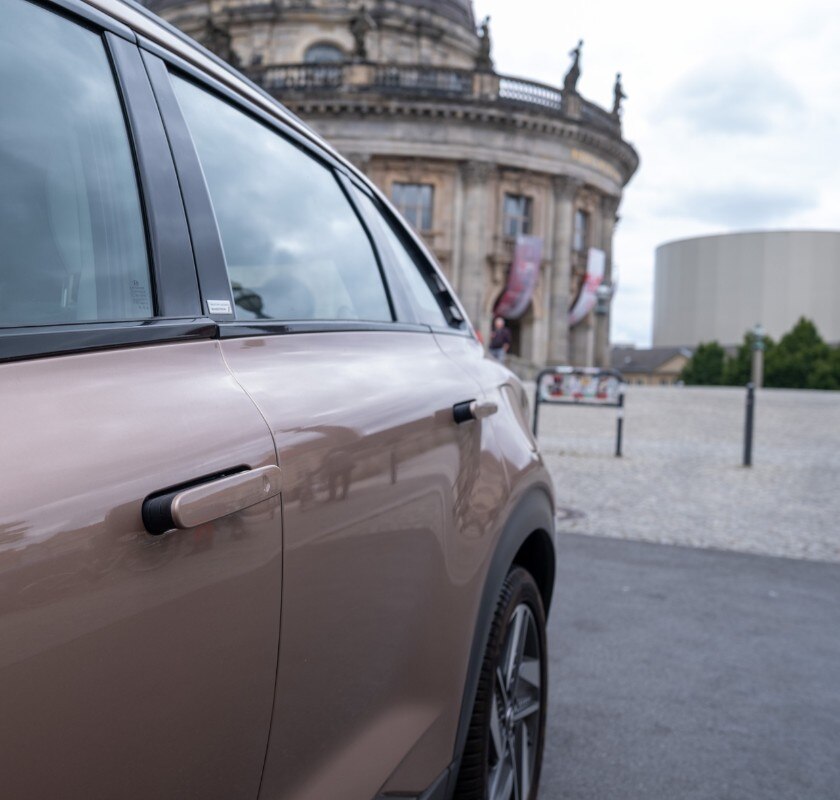
From a layman driver’s perspective, if hydrogen stations were to be developed at the current pace, there’s still no reason why H2 cars shouldn’t be a viable alternative to battery-powered vehicles in the near future. Admittedly, there are still a few hurdles yet to be solved to make this vision a reality. First and foremost, the puzzle of fuel production. While cars like the Nexo are CO2-neutral, as their byproduct is just water, the hydrogen that powers them today is not produced with green technologies.
Hydrogen is currently extracted either from water, with an energy-intensive process, or from methane. In the second instance, extraction is more accessible and cheaper, but the carbon footprint is heavier. The good news is that many companies and startups are currently working on methods to produce hydrogen sustainably.
Production of green hydrogen at scale, in other words, is not here yet, but the investments and the interest from institutions and governments are making it an attainable goal in the mid-term.
Once this and a few other scaling hurdles are solved (i.e. the cost of transportation and storage), hydrogen is set to be a valuable alternative to battery-powered mobility. The fact that we could easily adapt the current fueling infrastructure to H2 distribution without rethinking and overhauling city-wide electricity grids is another advantage that shouldn’t be overlooked.
Moreover, if we look beyond transportation, H2 certainly has a great potential to become a sustainable fuel for a broader range of applications, despite what critics like Elon Musk would maintain (while ignoring their vested interest in Lithium-Ion batteries).
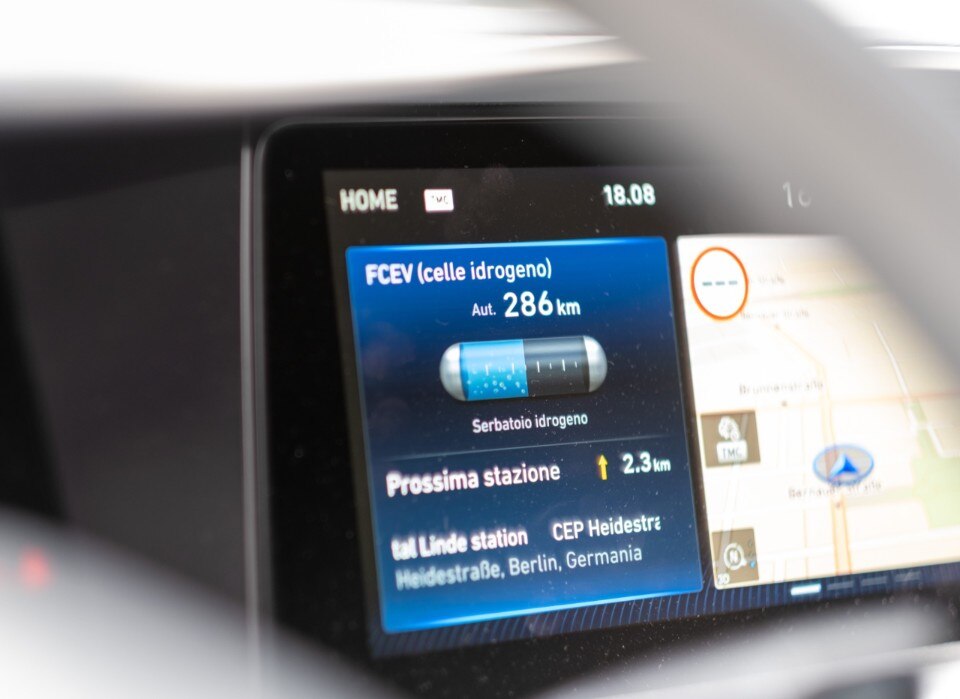
There are still many variables at play for H2 to become a successful addition to batterie-based mobility and quite a few problems to overcome. Nonetheless, driving a Hyundai Nexo for a while, especially here in Berlin, felt like a full-scale rehearsal of what the future of green mobility could look like. That future is near enough, and interest from governments and heavy investments from companies like Hyundai make us think that the road is set. The hydrogen prophecy has a very high chance to be fulfilled within a reasonable amount of time.
